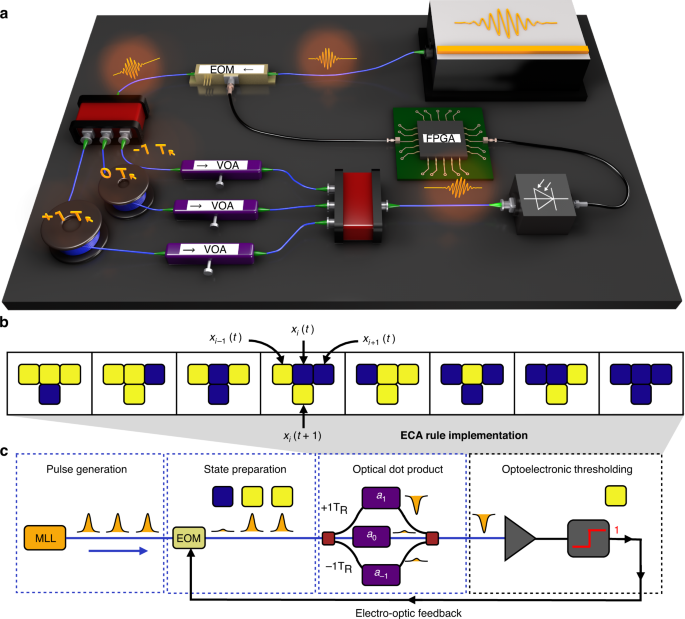2023-06-06 カリフォルニア工科大学(Caltech)
◆セルオートマトンは簡単なルールに基づいて複雑な振る舞いを示し、高速で情報処理を行うことができます。この光子コンピューティングは、次世代コンピュータの効率的な実行に寄与する可能性があります。
<関連情報>
- https://www.caltech.edu/about/news/unlocking-photonic-computing-power-with-artificial-life
- https://www.nature.com/articles/s41377-023-01180-9
複雑な現象のシミュレーションのためのフォトニック素粒子セルオートマトン Photonic elementary cellular automata for simulation of complex phenomena
Gordon H. Y. Li,Christian R. Leefmans,James Williams & Alireza Marandi
Light: Science & Applications Published:30 May 2023
DOI:https://doi.org/10.1038/s41377-023-01180-9

Abstract
Cellular automata are a class of computational models based on simple rules and algorithms that can simulate a wide range of complex phenomena. However, when using conventional computers, these ‘simple’ rules are only encapsulated at the level of software. This can be taken one step further by simplifying the underlying physical hardware. Here, we propose and implement a simple photonic hardware platform for simulating complex phenomena based on cellular automata. Using this special-purpose computer, we experimentally demonstrate complex phenomena, including fractals, chaos, and solitons, which are typically associated with much more complex physical systems. The flexibility and programmability of our photonic computer present new opportunities to simulate and harness complexity for efficient, robust, and decentralized information processing using light.



